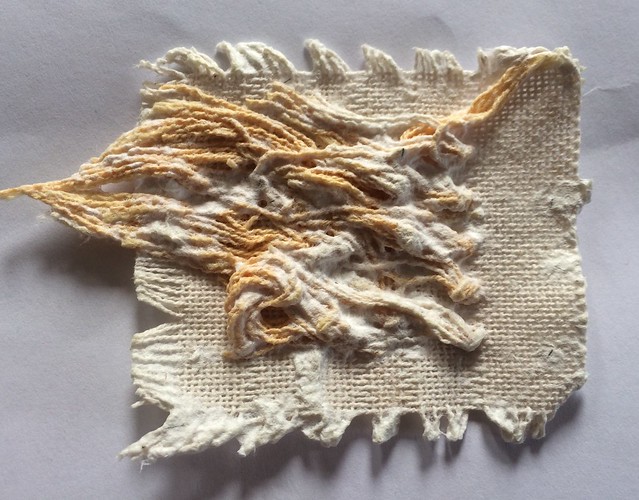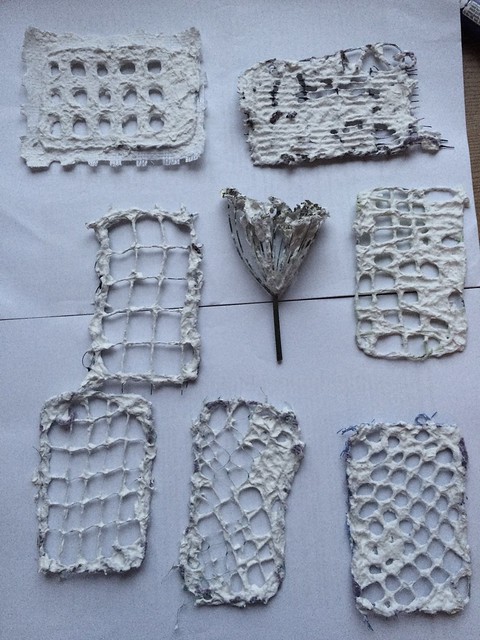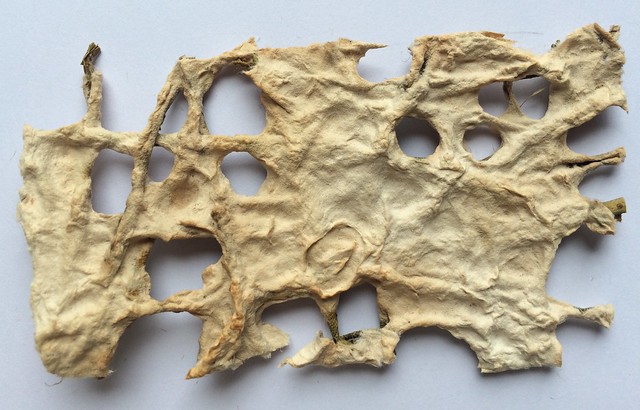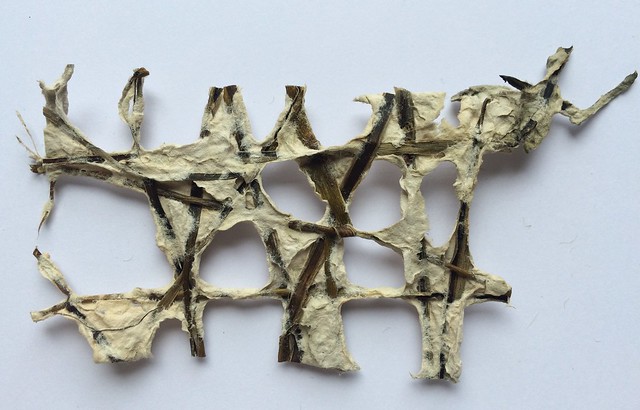I went to use my previous paper/grids for the next chapter but alas I appear to have misplaced them somewhere! It’s a touch disappointing but was an excellent excuse to make some more! And here they are:
7.34 – This is an earlier grid dipped in paper pulp and pressed.

7.35 – And here’s the other side.

7.36 – Pulled jute fibres pressed onto paper pulp.

7.37 – Pulled fibres pressed onto a thin layer of paper pulp (hence the holes).

7.38 – Skeleton leaves pressed onto paper pulp.

7.39 – Close up – it looks like fields covered in snow!

7.40 – Grid pressed into a thin layer of paper pulp.

7.41 – Pulled threads pressed onto paper pulp.

7.42 – A grid pressed onto paper pulp with two strips of paper pulp added to capture the fabric.

7.43 – Close up showing where some of the edges have been pulled out of the dried pulp.
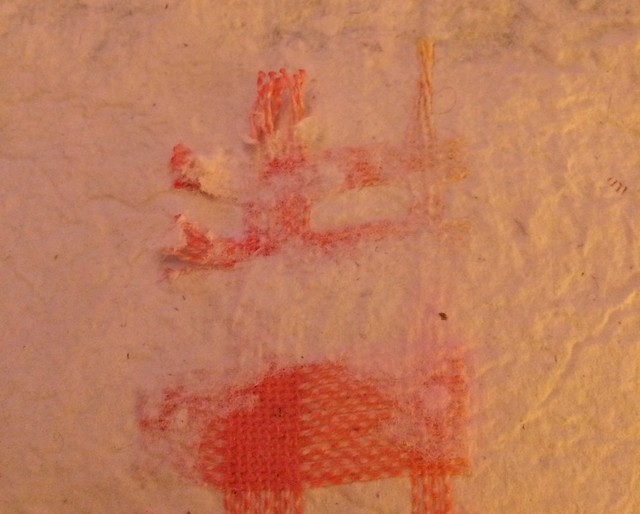
7.44 – Grid and pulled fibres pressed onto paper pulp.

7.45 – Close up. The ink from the fabric has blended into the paper.

7.46 – Grids added to paper pulp with two strips of pulp added to capture the fabric.

7.47 – Close-up showing where I’ve pulled the edge clear of the pulp.

7.48 – Jute sandwiched between two ‘frames’ of paper pulp which were pressed together.

7.49 – Grid added to frame and then pulp poured on top. Some is well-embedded but some is not. I haven’t pulled fibres on this one to keep it flat.

7.50 – Fabric with a pulled hole in the middle was placed on the frame and pulp was poured on top.
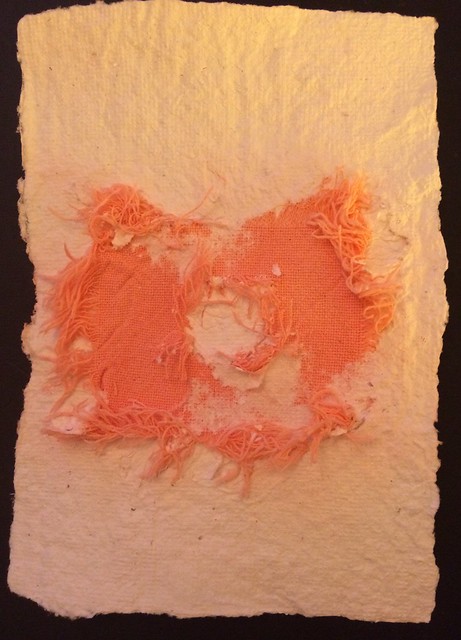
7.51 – Close-up showing where I’ve pulled the edges free from the pulp. I find I want to keep touching this piece of paper as it’s so tactile.





























